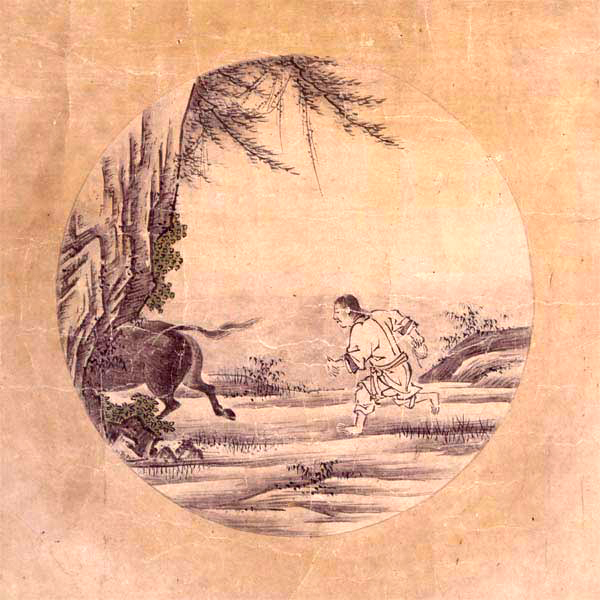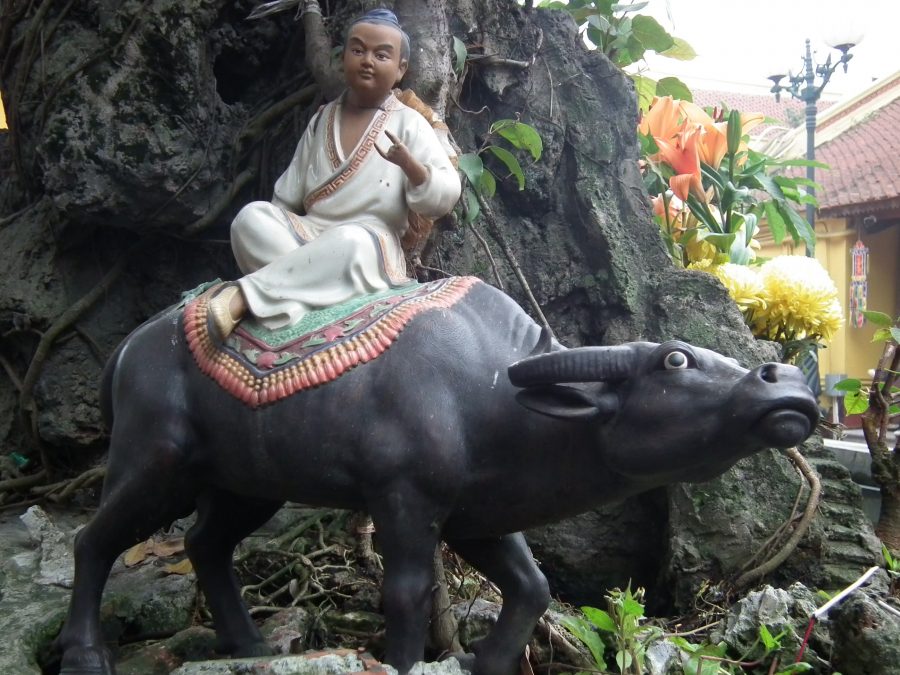
We are all born as Buddhas. But the illusion of the world confuses our feeble minds and we forget who we really are. Or what we really are: Natural.
The ancients discovered this truth and wrote about it at great lengths – except the secrets are hidden in symbolism.
Only by decoding the symbolism, and practising the advice therein, will you rediscover your Buddha-nature.
Once such training is the ancient Japanese science of zazen. Zen is perhaps the most prominent ancient philosophy people know of and practice today.
A classic story of Zen literature, “In Search of the Missing Ox,” explains the nine stages of consciousness disciples must pass through to return to source and experience oneness through zazen.
I think you’re going to like this.

In Buddhist literature, the Ox is likened to man’s True Nature. Zen is the path that helps the individual find the Ox. The beginner is first initiated into how to sit, and how to regulate his breath and the activity of his mind.
The disciple reads philosophy, to acquire knowledge and practices meditation to learn how to quiet his mind. He becomes aware that his habitual mind is agitated and he has been suffering with a restless feeling. Now, having slowed down the thought pattern, grows in confidence that with persistence he will achieve kensho.
The disciple experiences a kind of Samadhi which gives him a glimpse of kensho, but it is unstable and he cannot explain the experience with any clarity or assurance.

The disciple has other experiences of Samadhi during mediation whereby the body falls away and he loses all sense of time. He feels an internal strength building up but struggles to maintain the sensation for long or during every session of meditation. The Ox keeps running away. However, he is experienced enough now to know that all things come from the same source, but is unable to control his mind in everyday life. He continues to struggle with unworthy thoughts and giving into temptation. However, you realise that your true nature is in yourself, and at the same time in the external world.
Samadhi in meditation is still intermittent and the disciple feels a stream of emotion flowing from the heart. However, you still continue to struggle with wandering thoughts. You also question whether you have Samadhi at all. But out of meditation, applying effort and will power, the disciple has control of his mind and can resist temptation.
After long practice, you will immediately fall into Samadhi without noticing the bodily sensations. You will simply sit down, draw in a deep breath and will immediately be in Samadhi.

At this point, you no longer need to pay attention to your breathing during meditation and can even slip into Samadhi during quiet times of the day such as when riding the bus or at work. You do not fret about anything. Your attitude is, I don’t mind what happens.
This is a state of absolute Samadhi. At this stage, the egoless ego emerges although certain vestiges of mood remain, typically reflections of one’s lifetime. However, the habitual way of thinking is swept away and both the reflected and the reflecting are swept away.
Once you emerge from “no ox, no man” you automatically return to source. When you look at the world, you see the same scenes you saw the previous day, but now everything talks to you. Habitual consciousness has totally dissolved and you have reached Pure Land. The ninth stage is attaining absolute Samadhi, but maintaining it in your everyday life and living in positive Samadhi. The mind is completely purified and you can enjoy perfect freedom.
What stage of consciousness are you in? Are you still taming the Ox, riding the Ox or have you lost the beast? Leave a comment in the field below and let us know.
